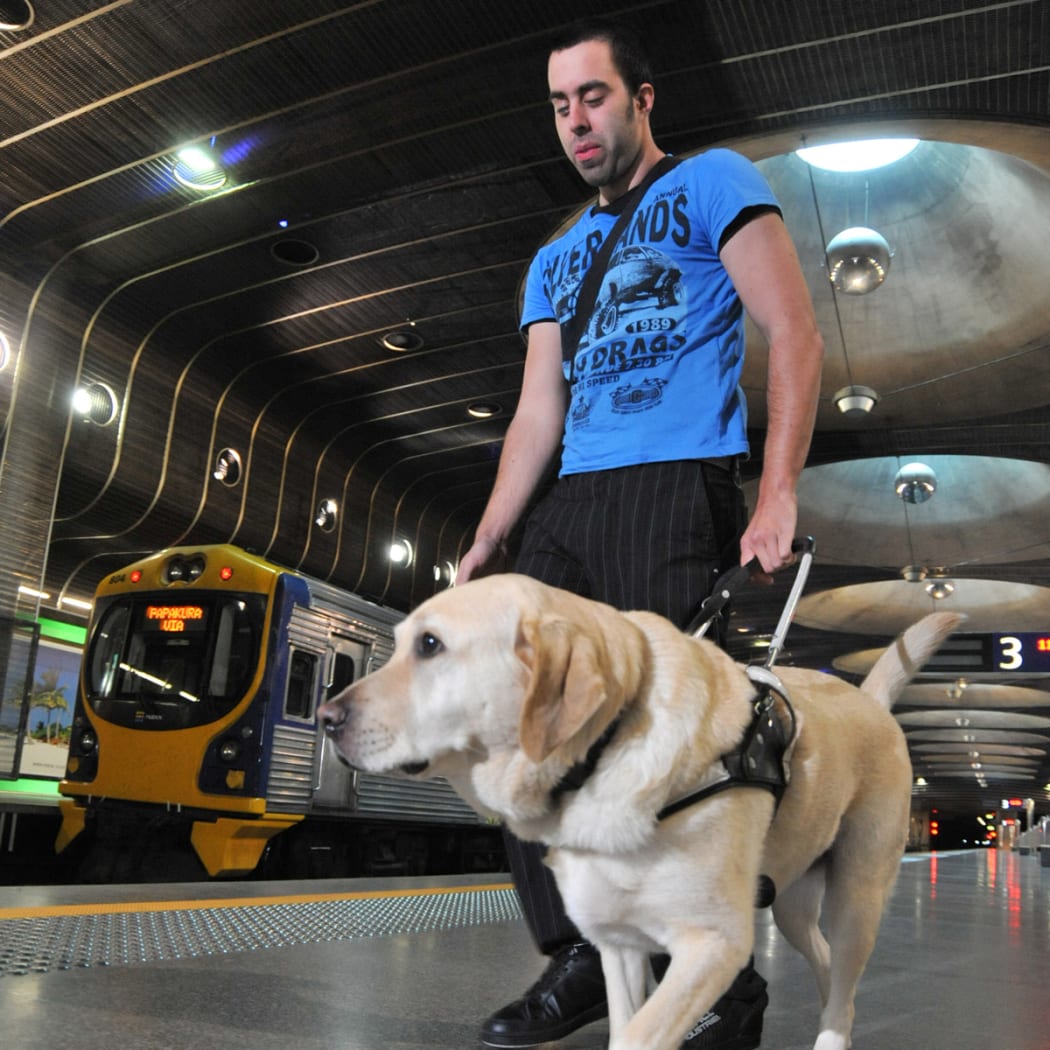
Tony Mosen and his dog Gilbert. Photo: Supplied
For Tony Mosen, trying to see is like looking through a thick blanket of fog.
“Some people think it’s just black but the brain still imagines pictures and colours,” he says.
The 27-year-old was born with Peters’ Anomaly, a rare eye condition caused by a mutation in the genes or as Tony calls it, “bad luck”.
The condition means Tony’s eyesight is getting progressively worse, and while he has about 5 to 10 per cent of his vision left, doctors say he’ll eventually lose it all.
“They told me I’d be completely blind by the time I was 16 but that didn’t happen. I guess I’ll just deal with it as it comes. I don’t really think about it,” he says.
Living with his wife and seven-year-old son in Whangarei, Tony says he’s had over 100 operations on his eyes including six corneal transplants. “None of them ended up working.”
About two years ago, Tony made the decision to have his right eye removed after the glaucoma that developed started causing him serious pain.
“It wasn’t just the pain, the eye looked really yuck and I was pretty much blind in it.”
After the operation, Tony could see incredible colours from the space where his eye had been. “It was awesome, kind of like an acid trip but way safer.”
As well as odd jobs fixing computers, Tony runs a mobile DJ-ing business called Hey Mr DJ. He rarely tells clients he’s blind and never had an issue until last year when he was booked to play a 40th birthday in Auckland.
On the day of the party when Tony turned up at the house, the clients told him they didn’t want him to play anymore and demanded their deposit back.
“They told me it was because I had falsely advertised my service. I was so mad,” says Tony. “It was the busiest time of the year and I had turned down four other gigs that night”.
Despite the reaction from the Auckland couple, Tony continues to book events.
When he was younger, he remembers “riding bikes, running around and do all sorts of crazy shit” he wouldn’t dream of doing now.
He didn’t want his lack of vision to hold him back but started to get frustrated as the rest of his school friends began getting their driver’s licenses and gaining more independence.
“In my last year at high school a mate said ‘do you know what could be really cool to pick up chicks? A guide dog!’ I put in an application and couldn’t believe it was accepted.”
Tony says the dog-matching process was incredibly thorough, taking into consideration everything from his lifestyle to bodyweight. Just before his 18th birthday, Tony was paired up with a guide dog called Gilbert.
“When they bought him in for the first time, he almost pulled the lead out of the trainer’s hand to try and get to the cat food. It was awesome.”
With Gilbert by his side, Tony gained the freedom to out go with friends, travel around the city, and enjoy being young.
Gilbert was bred and trained by The Blind Foundation, New Zealand’s main provider of sight loss services.
With no government funding the foundation says they rely completely on donations.
“That’s why we’re so grateful to anyone who supports our Red Puppy Appeal because that’s how it all works,” says Angela Coupar, dog care and welfare manager at The Blind Foundation.
Guide dog puppies go through two years of rigorous training before they graduate. Once assigned, their working life averages eight to ten years.
WATCH Angela Coupar talk about how guide dogs are raised:
Last week, after 11 years of helping Tony, Gilbert retired and now spends his days relaxing and playing with the family’s two other pet dogs.
“Most people are great with guide dogs but there are some dicks out there,” says Tony.
“One guy ashed a cigarette on Gilbert and I nearly got in a punch-up over it. The guy probably thought I wouldn’t know but my friend told me what he’d done.”
Since recently moving from Auckland to Whangarei, Tony decided not to apply for another dog to fill in for Gilbert.
“In Auckland I used to go out and use public transport heaps but here I live 40kms out of town so there’s not much point getting a new guide dog,” he says.
The average time spent waiting for a guide dog is around 12 months, but it can take longer if people have specific needs.
“I thought I might as well give someone else the opportunity who needs it more.”
He no longer uses a guide dog but Tony says he’s never felt more comfortable with his disability.
“My bother-in-law in Whangarei is paralyzed and cruises around on a Segway. He jokes around and introduces me to people saying ‘he can’t see you, he’s blind as fuck,’” laughs Tony.
“I tell him he can’t talk, he’s a cripple. In a way, meeting him and seeing his openness has made me more accepting of myself.”
The Blind Foundation’s Red Puppy Appeal is being held this month.

